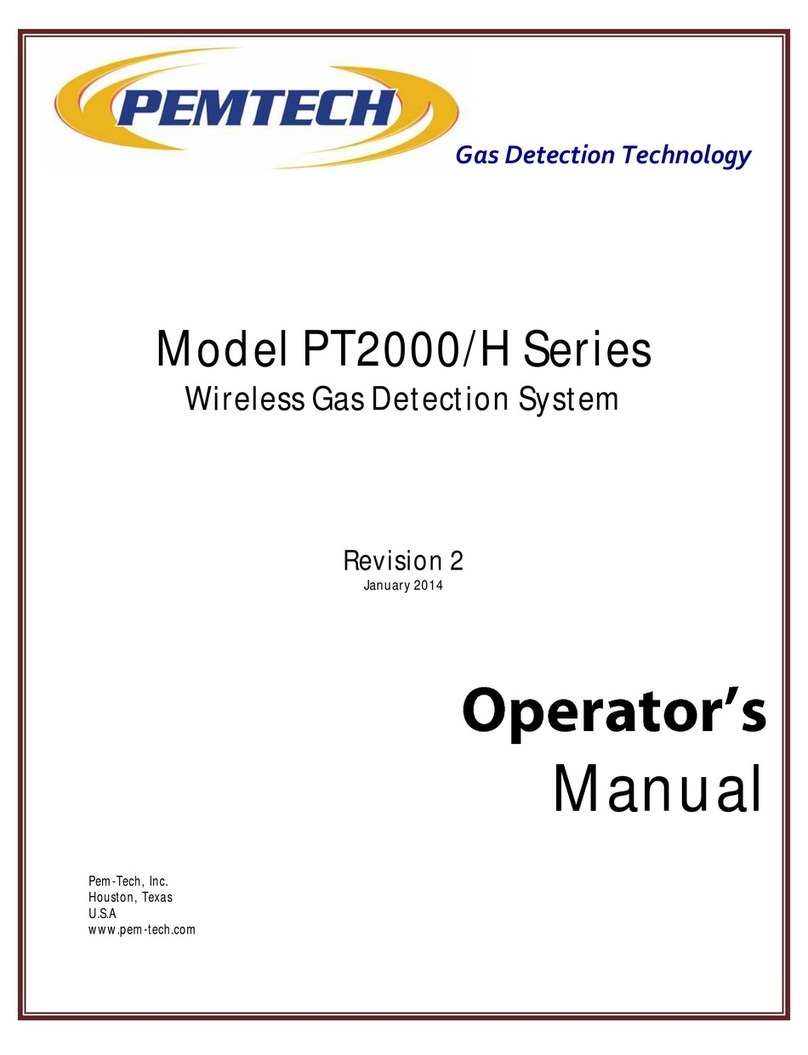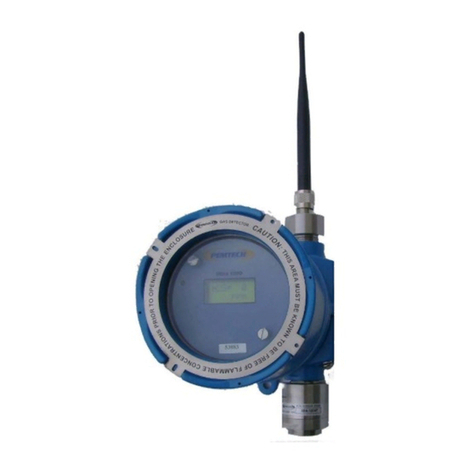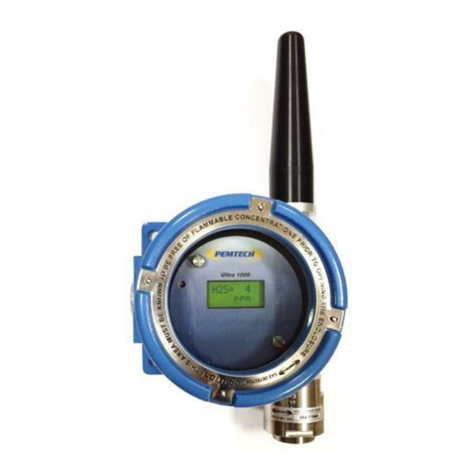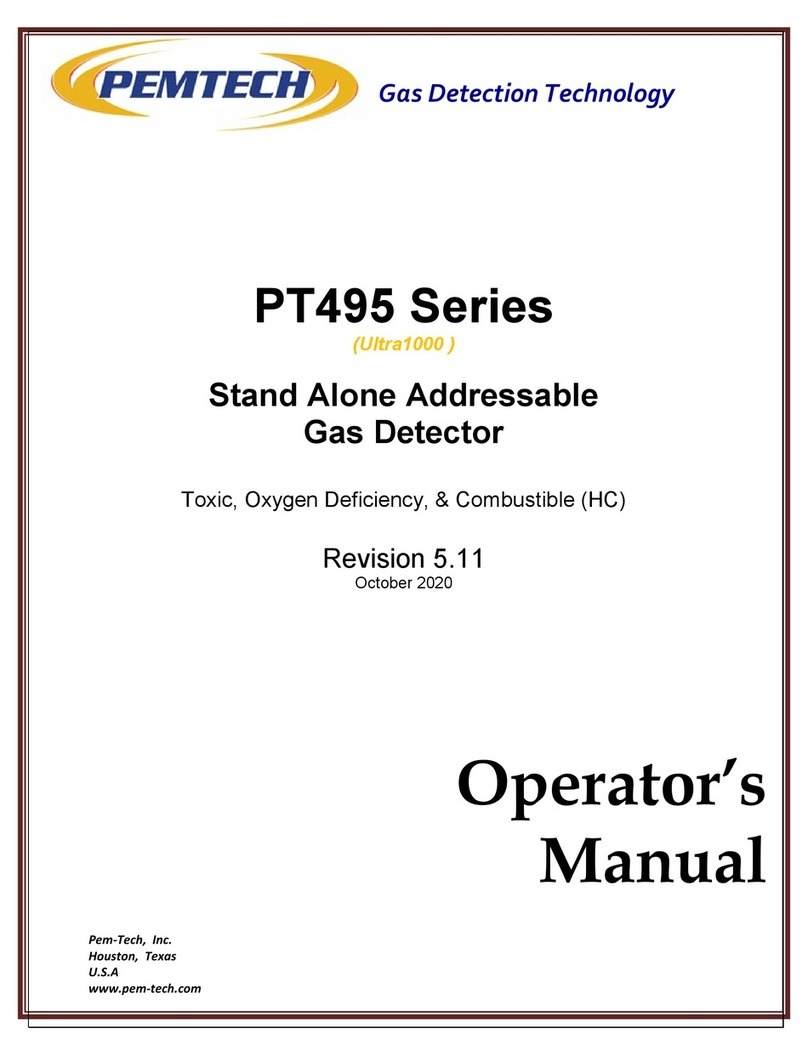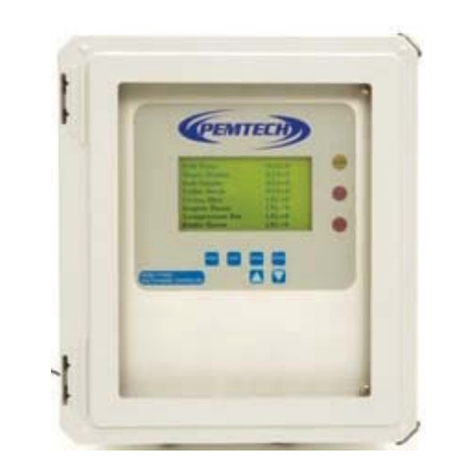
PT395 Series Detector
SPECIFICATIONS
Continuous diffusion / adsorption
Combustibles (HC): Infrared & Catalytic Bead
Carbon Dioxide: Infrared
Toxic and Oxygen: Electrochemical
Typical Measuring Ranges
See Table 1 for target gases and range
Repeatability
±2 % Full scale
Electrical Classification
Explosion Proof
ATEX: II 2 G EX d IIC T6 (Tamb = -34°C to +100°C)
CSA: Class I, Div 1 & 2, Groups B,C& D
C22.2 No 30-M1985 &
C22.2 No 142-M1987
Ingress Protection
NEMA 4X, IP66
Approvals
CSA , ATEX/IECEx
Typical Response Time &
Operating Temperature Range
See Table 1 for details
Operating Humidity
15% to 90% RH, non-condensing
Storage Temperature
-40°F to +167°F (-40°C to +75°C)
Mechanical Specifications
Height: 7.4inches (188 mm)
Width: 6.2 inches (159 mm)
Depth 4.9 inches (125 mm)
Display
3 Digit LED Display
Status Indicators
3 Digit LED display for gas concentration,
calibration mode and fault status.
3 LED for Alarm Status / indicators
Input Power
14-28 VDC. 24 VDC nominal
Power Consumption
Toxic: 65 mA @ 24 VDC typical
Infrared: 60 mA @ 24 VDC typical
Catalytic Bead: 240 mA @ 24 VDC typical
Alarm Relays
3 each Fully programmable for Low & High alarm levels and
sensor Fault. Also programmable as Latching or Non-
Latching
Relay Ratings
SPDT Form “C” type Relay contacts
1 Amps @ 250 VAC or 30 VDC
Analog Output
Linear 4-20mA ; 0 -100% Full Scale (300 Ohms max. load)
2.0 mA - Calibration mode
< 1.0 mA - Sensor malfunction
Cable Requirement
3 wire shielded cable for Power and Analog output
Terminal connectors 12 AWG Max
Input / Output Protection
Transient over voltage suppressor,
Reverse polarity protection
EMI/RFI Immunity
Cable Entry Hub
¾” NPT Female
Adapter available for ½” NPT / M20





